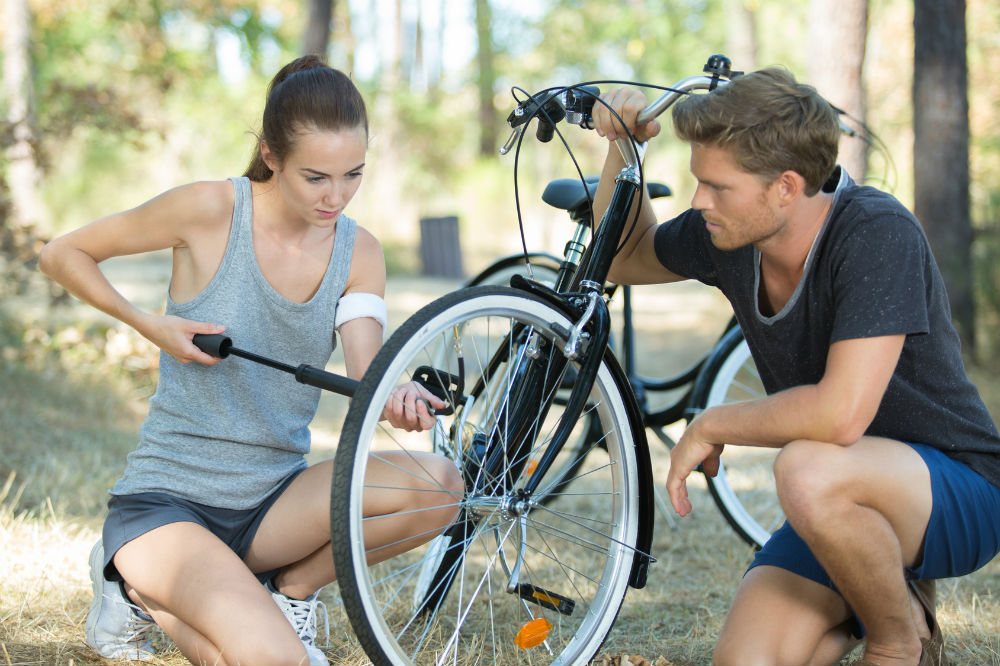
All the Things You Need to Know in Pumping Your Tire for the First Time
Riding a bike is a healthy hobby everyone finds fun. However, the hard part of this activity is when your tires become flat as you pedal along the road. Having a handy bike pump that you can bring during your adventure is a must.
And of course, knowing how to use a bike pump is also important. It’s important to know the different uses of all the tools included in a repair kit.
While it might be a simple task for most, it is rather confusing for beginners. This is why this article will discuss everything you must learn about bike pumps and bike pumping.
Practice as you read on until you get used to the basic steps. Master the skills and be ready for flat tire emergencies in the future.
Pumping Your Tire for the First Time: Know the Different Types of Valves
Bikes have valves that are usually classified into two basic types: Presta and Schrader. Generally, road bikes have Presta valves while mountain bikes have Schrader valves.
What’s the difference between the two? Presta valves look slimmer and weigh less than Schrader valves. Presta valves have a lock nut on their top sections.
On the other hand, Schrader valves are wide and robust. On the inside part, there is a spring mechanism that keeps the valve closed.
Different Types of Pump Heads
Knowing the type of valve your bike has is crucial because the two have a different diameter. Therefore, they cannot be interchanged because your bike pump is designed for one type of valve only.
In simple terms, you cannot use a Schrader-headed pump on a Presta valve unless you got an adapter.
Since there are two types of valves, there should also be two types of pump heads that will perfectly fit them. A bike pump usually comes with these two heads.
Sometimes, they have interchangeable heads instead. These modern pumps have dual heads or attachments so that you can inflate both mountain and road bikes. You get to do both jobs using one tool and that’s really cheap.
Different Types of Pumps
Before you learn how to use a bike pump, you should know the differences of each type first. All bike pumps are designed to inflate tires. But you have to know that each type has both advantages and disadvantages.
For example, a mini pump is small and lightweight. It is handy and ideal for emergency situations because you can bring it anywhere you go.
Most brands are attachable to bike frames using mounting hardware. The downside is that it will take you more pumps, which can be really exhausting. While it is possible to be used for high-performance bikes, reaching 120 PSI is really difficult.
Floor pumps have long been utilized by many riders before mini pumps were invented. They are heavy duty, providing high pressure with their air filling power.
Good models can inflate up to 220 PSI/10 bars and are not limited to bike tires but are good for most types of tires. They are faster and more efficient, too.
Aside from this, they are also the safest because of the pressure gauges that read pressure accurately. However, floor pumps are heavy and big. That is why you can often see them at vulcanizing and repair shops. They are only ideal for home use.
Another type of pump for road cyclists is the frame-fit pump. This one snaps directly to the frame of bikes without using mounting devices. They are longer and quite heavier than mini pumps.
Yet, they are more efficient for they can inflate faster. Their air pressure capacity is up to 160 PSI, making them a better choice for road bikes. Still, they are slower and not as heavy duty as a floor pump.
How to Use a Bike Pump
Whatever type of bike pump you have, the steps for inflating tires are similar.
- Unscrew the valve head or remove the covering of the top section.
- Know how much pressure your tire needs by checking the sidewall.
- Attach the right pump head to the valve head tightly and securely to prevent air leaks.
- Pump the tire to the optimum pressure. Make use of the pressure gauge to ensure you achieve the right PSI.





